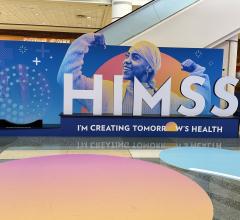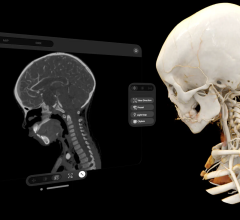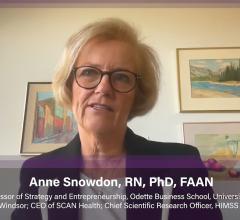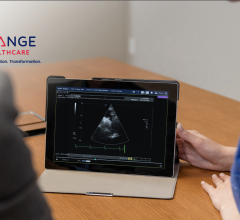Along with the growing amount of data being collected in electronic medical records (EMR) and other information repositories is the growing need to dissect and analyze that data fast and efficiently. With hospitals and practices looking to maximize efficiencies and optimize quality within their operations, having a set of analytics tools can be a key strategy for moving forward with an evolving healthcare environment.
“With analytics, we can get a lot more information that we can use in adjusting our workflow or our policies,” said Nabile Safdar, M.D., director of imaging informatics and a radiologist at Children’s National Medical Center in Washington, D.C. “We just didn’t have access to all that information before.”
Identifying Key Reports and Reducing Turnaround Times
Safdar and other radiologists read for all modalities including computed tomography (CT), magnetic resonance imaging (MRI), ultrasound, X-ray, nuclear imaging and interventional radiology at Children’s National, as well as a select few other sites including an outpatient center. The staff sees about 120,000 cases per year, according to Safdar, and has been using Montage Search and Analytics since 2011 to track such data. The solution is a data mining and analytics tool that can utilize information in an EMR or radiology information system (RIS) and leverage it to “enable levels of understanding not previously available,” according to Montage’s website.
Safdar said analytics tools have helped improve productivity in his department in a variety of ways. Probably one of the biggest impacts was the ease in which reports could be compiled. “We wanted to be able to have more information for quality improvement purposes,” he said. “Although we could certainly run reports in a traditional manner with a database query, we found that cumbersome and a little bit too tedious for us to be able to retrieve the information we wanted in an integrative way.”
Now, the staff at Children’s National has the ability to “ask questions” and have the information “at our fingertips,” said Safdar. The questions can range anywhere from how many cases a radiologist has read to what types of pathologies are studied. One of the key items that analytics has supported since its implementation is clinical research. “With Montage, we were able to identify, retrospectively, cases of interest for our research studies. We were also able to find the best cases for teaching purposes, to teach medical students, residents and fellows,” Safdar noted.
Using analytics has also helped radiologists reduce turnaround times, he added. With information readily available that can shed light on turnaround times by month, radiologist or modality, Children’s National has been able to reduce the overall average turnaround time and track strategies that may have helped accomplish that, such as implementing new technologies or workflow changes. “We want to be able to reduce the maximum ceiling of any given report,” Safdar said. “Now we can get that information very easily and provide specific feedback to physicians about their turnaround times.”
Improving Quality, Closing the Data Loop
Radiology Imaging Associates (RIA) is a radiology practice in Denver that employs a variety of proprietary and vendor-purchased analytics tools to mine the data in its systems. Given the scope of RIA’s practice (hospital imaging in Colorado, Kansas and Nebraska as well as outpatient imaging in the Denver metro area) the amount of data can be overwhelming without the tools to efficiently access it.
“We’ve identified information and analytics as a key differentiator,” said Jonathan Kalstein, chief administrative officer and chief financial officer for Radiology Imaging Associates and Invision Sally Jobe, also in Denver. “Montage is one of many tools that we employ to better understand our business and how we interact with patients, referring physicians, hospital partners and payers.”
RIA has been using Montage Search and Analytics at RIA since mid-2013, and Kalstein said the ability to search and access millions of records in seconds is critically important. “We use our data to try to improve what we’re doing and try to identify ways we can improve our interactions with our customers,” he said. “We see this data as extremely important and it has historically been more difficult to access.”
Currently RIA is leveraging analytics to focus on quality improvements at the practice. “Analytics has allowed us to take better advantage of the information in our voice recognition system and structured reporting to measure how we are doing and to identify where we can improve,” said Kalstein. “We continuously try to identify ways in which we can improve our interactions, whether it is to better serve our patients, hospitals and referring physicians, or to receive payments more quickly and effectively.”
Developing “end-to-end” data is one of the areas of focus for RIA, added Kalstein. “From the moment a patient hits our radar, to when we receive payment from them, we’re trying to close that loop so we can see the end-to-end interaction and understand that better.”
Market Solutions
The market for analytics solutions continues to evolve. GE Healthcare announced in January it is acquiring API Healthcare, a provider of healthcare workforce management software and analytics solutions headquartered in Hartford, Wis. API’s solutions include staffing and scheduling, patient classification, payroll, time and attendance, business analytics and more, and the company was rated by KLAS as having the top time and attendance solution from 2002-2012, and the top staffing and scheduling solution in 2012. API’s offerings are expected to complement GE Healthcare’s current hospital operations management portfolio, which gives hospitals real-time access to operational data.
Intelerad Medical Systems announced in November its Intelerad Analytics solution, which the company featured at the 2013 annual meeting of the Radiological Society of North America (RSNA). Offering a comprehensive view of real-time performance metrics, the solution provides instant access to information through tailored dashboards and reports, eliminating the need to manually compile and cross-analyze large quantities of data. The module can be available from any location, allowing performance to be monitored at any time.
“We had the data before, we just didn’t have access to it,” concluded Safdar. “I frequently look at the dashboards for the radiology practice, or my own personal dashboard to see how I’m doing. It’s that kind of feedback that I need to be able to make myself a better radiologist.”

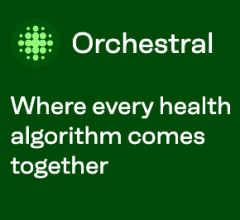
 December 23, 2025
December 23, 2025 
